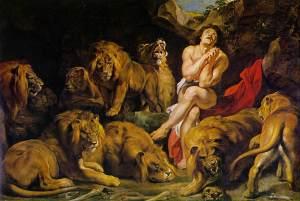
In a recent article, which will hopefully be published, I explore the origins of the horror tradition in the Bible.That should come as no surprise since the Good Book is really the beginning of the western literary canon.Yes, there are earlier works—the Epic of Gilgamesh may be considered part of that canon as well, for the canon has no official curator—but because of Scripture’s status literature in the western world takes off from there.In any case, the other day I was considering the additions to the book of Daniel in the Apocrypha.The Apocrypha is, of course, part of the Catholic biblical canon, but not the Protestant.The additions to Daniel roughly fall into three stories, or two stories and a poem.The two stories—Bel and the Dragon, and Susanna—involve Daniel as an early kind of detective.
Traditionally the inventor of the detective story is Edgar Allan Poe, and certainly in the modern literary canon that may be so.One wonders, however, if Poe might have drawn his inspiration from these apocryphal stories.Susanna goes like this: two nasty elders fall in lust with Susanna, the beautiful wife of a local prominent judge.They stalk her, learning her habits, and when they know she’ll be alone they confront her demanding sex.If she won’t, they’ll claim they caught her with another man and since the law requires two witnesses, well, she was screwed.Since she won’t comply they accuse her and she is condemned until a young Daniel in turn condemns the court for not questioning the men separately.When Daniel does so the details of their story don’t match and Susanna is vindicated.Part courtroom drama and part ratiocination, this is an early detective tale.
Bel and the Dragon involves a couple stories together, but the story of Bel is the one involving detective work.The priests of the god Bel take food into their temple every night to offer as a sacrifice.Since it’s gone in the morning, they offer this as proof that Bel is real.Daniel, however, knows Bel is just a statue and so he sprinkles a fine layer of ash on the floor around the food one night.The next day as Bel’s followers announce the food is gone and the temple was sealed for the duration, Daniel takes them back and shows the footprints in the ash—the priests have been entering from a secret access and eating the offering.There may not be a direct line from these stories to Poe, but they nevertheless reinforce the idea that the western canon begins with Holy Writ.If we explore this with our own ratiocination we’ll discover, I believe, much more.
